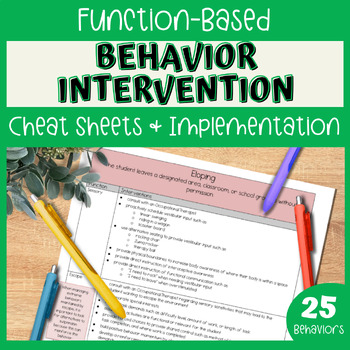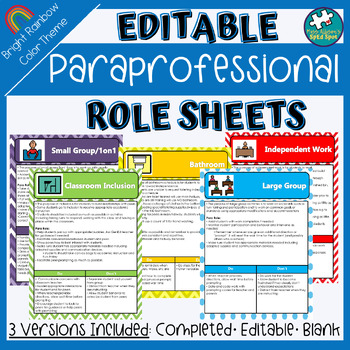
In my classroom and in my role as an autism & low-incidence disability coach, few days go by when I am not trying to decipher student behavior. After working with hundreds of students and thousands of educational professionals, I have developed a 5-step system for behavioral intervention that has worked really well. In today's post, I will walk you through each step to help you with solving problem behaviors that may be impacting student success in your classroom. ...

After all the talk about what students love during Valentine's Day activities, I always found a natural next step in my thematic units was to focus on feelings and emotions. Check out some of my favorite Emotions activities: ELA Ideas I first introduce feelings vocabulary. We use a variety of visuals including photos, icons, and even emojis. Next, we practice sorting emotions based on the vocabulary we've learned. These cut and paste worksheets are also included in my Feelings Thematic Unit . Then, we read stories to discuss each emotion in context. I love The Way I Feel by Janan Cain because it covers so many robust feeling words. I use the communication board from my Feelings Thematic Unit for students to participate. Another favorite feelings story is When Sophie Gets Angry-- Really, Really Angry by Molly Bang. I love this story for introducing the concept of coping strategies to my students. I love this story so much that I created an entire Picture Book Comm......

Animals are a common special interest in my classroom so I have taken full advantage over the years of using animals to teach a variety of skills. One of my favorite units to dive into with my students is all about animals—especially animal habitats and how animals survive in the wild. It’s an engaging topic that naturally sparks curiosity and is perfect for hands-on learning. Over the years, I’ve found some creative strategies that really help make this concept click for the students in my special education classroom. In this post, I’m sharing my go-to tips and activities for teaching about animals in special education settings:...

Last year I read a book that changed my entire outlook on teaching teaching to my students with significant disabilities and complex needs. Comprehensive Literacy for All: Teaching Students with Significant Disabilities to Read and Write by Karen Erickson Ph.D and David Koppenhaver Ph.D. is a MUST-READ for teachers in the self-contained classroom! It provides Science of Reading research specific to our students with significant disabilities and provides some practical guidance. ...

The holiday season is my absolute favorite time of year outside and inside of the classroom! My students and I always have so much fun celebrating the holidays. And the first holiday to kick things off will be here before we know it! Keep reading to learn more about how I celebrate Thanksgiving in my special education classroom....

Pumpkin carving can be a fun and educational experience for students in the special education classroom, especially when you plan ahead for success. Whether you're a teacher, parent, or caregiver, incorporating sensory-friendly and accessible activities, such as pumpkin carving, into your fall curriculum can boost engagement and learning. In this post, you'll discover five practical tips to make pumpkin carving a safe, inclusive, and memorable activity for all learners—perfect for your Halloween or autumn-themed lesson plans. Tip #1: Consider Sensory Needs Sometimes a student may not be comfortable touching the pumpkin guts, so you can allow them to use gloves or even put some in a ziploc baggy to let them explore in a less overwhelming way. Sometimes, I had students who would absolutely gag at the sight of the pumpkin guts. I allowed them to do something else during that time like painting pumpkins or using stickers . This activity is not worth that much distress! Tip #2: U......

In my classroom, I used Unique Learning System for a majority of my curriculum. However, I found that I often wanted to supplement the stories with rich, authentic picture books. So my Picture Book Communication and Comprehension Supports units were born! ...
Subscribe to:
Comments (Atom)






